Recruiters
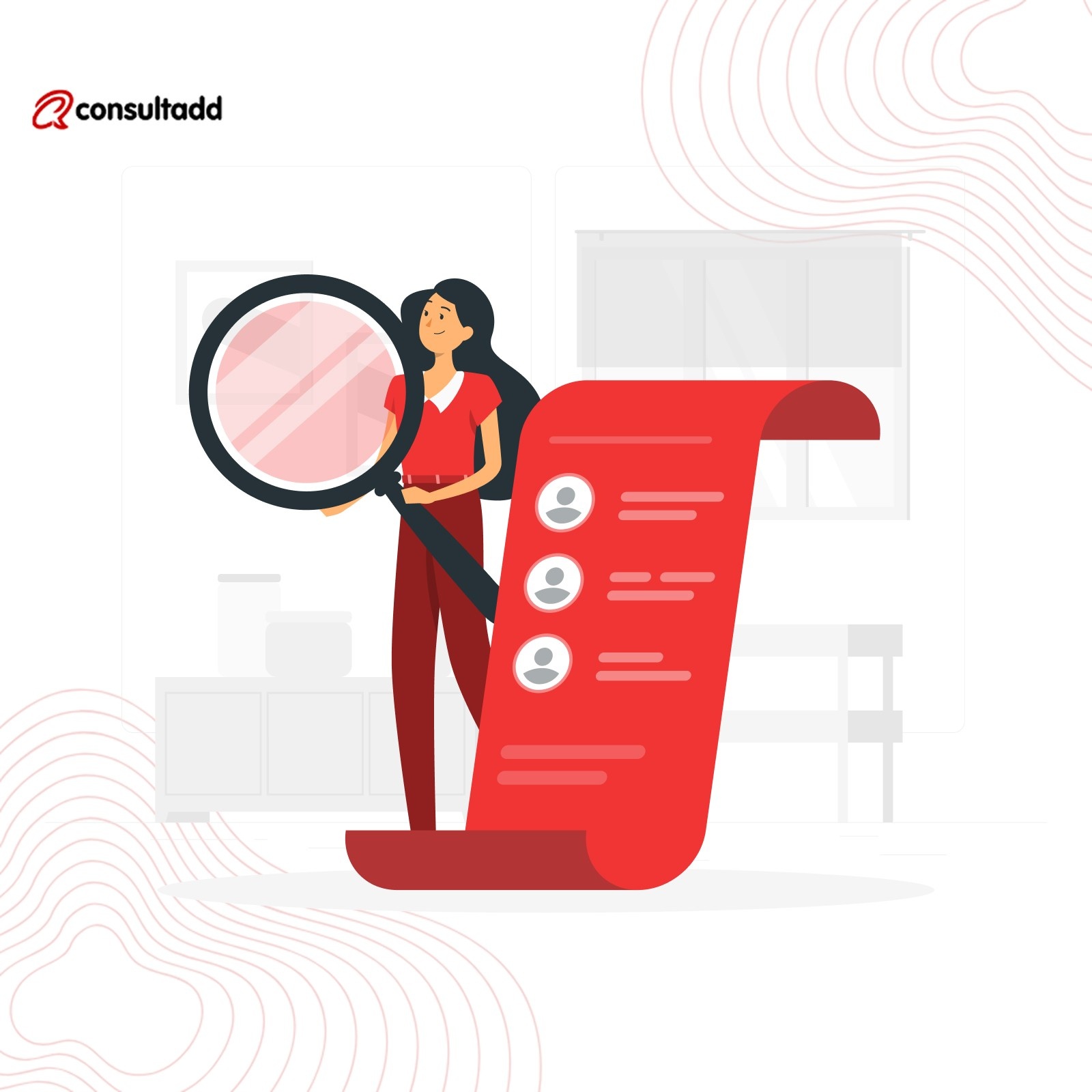
How to Gain Recruiting Experience: Top Strategies
Pressure is constant when you're a hiring manager.
Your day moves fast. Candidates ghost. Clients change specs last minute. And every role feels like a race against time. It’s no surprise that 61% of HR leaders say their top challenge is attracting the right talent.
In this kind of pressure cooker, experience isn't a nice-to-have; it’s your survival kit. It helps you ask better questions, manage client expectations, and recognize the difference between a great resume and a great hire.
The good news? Recruiting experience isn’t something you wait around for; it’s something you can build, step by step.
Let’s explore the practical strategies that help you grow quickly and recruit more effectively.
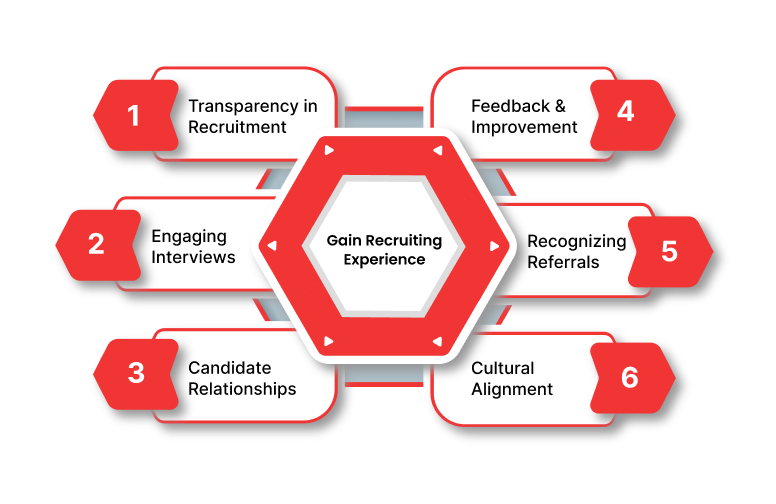
1. Transparency in Recruitment
Transparency isn’t optional; it’s how you build trust, avoid surprises, and move faster with confidence.
Share Job Details Upfront
Make sure candidates have all the key information from the start:
- Include job title, salary range, benefits, and perks
- Clarify visa requirements and remote/hybrid/on-site options
Set Clear Expectations
A predictable hiring process creates a positive candidate experience:
- Outline all interview stages, including purpose and format
- Share timelines and who the candidates will meet at each stage
Clarify Role Responsibilities
Avoid vague job descriptions, be clear and detailed:
- List daily tasks and key deliverables
- Explain the team structure and how the role supports business objectives
Be Honest About Contract Terms
If it’s a contract role, manage expectations transparently:
- Clearly state contract length and potential for renewal or conversion
- Avoid open-ended language or unclear commitments
Communicate Regularly
Lack of updates can cause anxiety or disinterest in staying in touch:
- Provide updates after each stage, even if it's a "no update" update
- Notify candidates promptly if timelines shift or decisions are delayed
Done right, transparency simplifies hiring and strengthens relationships from day one.
At Consultadd, we take transparency even further by removing friction at every step. Our team delivers screened, compliant, and ready-to-hire candidates, solving the problems of slow hiring cycles and unqualified applicants before they hit your desk. That means faster, clearer decisions and zero surprises in documentation or compliance.
2. Engaging Interviews
Great interviews aren’t just about ticking boxes; they’re about discovering passion and potential.
Marc Benioff, co-founder and CEO of Salesforce, once shared a simple but powerful insight that changed how he hires:
“The secret to successful hiring is this: look for the people who want to change the world.”
Therefore, an interview should feel like progress not pressure.
When it’s done right, candidates feel valued, and clients see the full picture. Great interviews uncover ability and build momentum toward hiring.
Here’s how to create interviews that engage, assess, and impress:
Smart interviews don’t just evaluate; they engage, convert, and build long-term credibility.
In fast-paced tech markets, speed is key. Use targeted sourcing tools, automated screening, and hands-on coding tests to quickly find top talent without sacrificing quality. Read our blog on Efficient Tech Hiring Strategies for Fast Talent Acquisition to learn more. These strategies help you hire smarter and faster.
3. Building Candidate Relationships
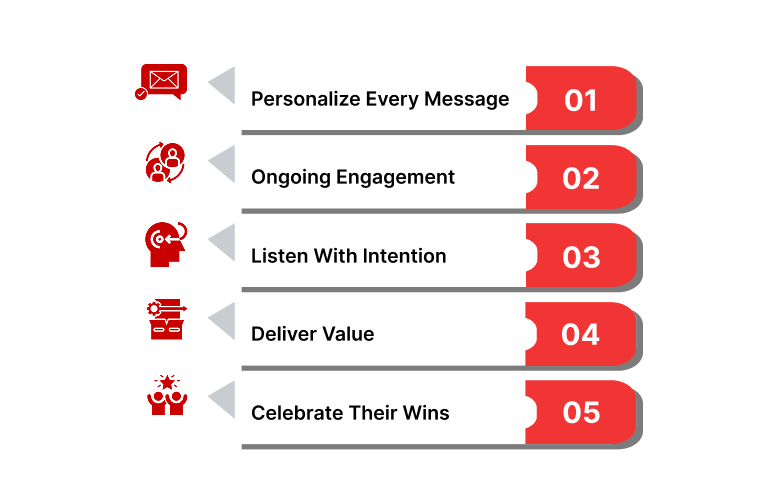
When candidates feel like numbers, they vanish. When they feel like people, they engage, they return.
Stronger relationships don’t just improve hiring metrics; they build your reputation as someone worth working with.
Here’s how to turn brief interactions into lasting connections:
- Personalize Every Message: Skip the generic outreach. Reference their past projects or career goals. Show them they’re more than a resume.
- Stay in Touch, Even Between Stages: No news? Still check in. A 2-line update shows you haven’t forgotten them, and they won’t forget you either.
- Listen With Intention: Candidates want to feel heard. Let them share career concerns, not just answers to interview questions.
- Deliver Value, Even After a “No”: Didn’t move forward? Offer constructive feedback or future leads. It sets you apart in a sea of silence.
- Celebrate Their Wins: Placed them? Reach out weeks later. A “Congrats, how’s it going?” message builds lifelong loyalty.
Human-first recruiting turns short-term hires into long-term advocates.
At Consultadd, we help you build these relationships at scale. Our process keeps candidates engaged with career support, visa guidance, and benefits, helping you dramatically reduce drop-offs. Plus, with a consistent pipeline of specialized, vetted talent, you’re always ready to meet client demand, no scrambling required.
4. Feedback and Improvement
Silence after an interview does more than disappoint; it damages trust.
Below are actionable ways to make feedback part of your competitive edge:
Give Feedback That Adds Value
- Share specific strengths and gaps, not vague “not a fit” responses.
- For rejected candidates, offer 1–2 actionable takeaways they can use elsewhere.
- With selected hires, reflect on why they stood out to improve future assessments.
Build a Feedback Loop with Clients
- Ask hiring managers for feedback on both hires and near-misses.
- Track patterns in client feedback to refine your sourcing or screening strategy.
- Use quick feedback forms to simplify the process and encourage more responses.
Use Feedback to Strengthen Employer Brand
- Candidates remember how you made them feel. Even rejections can leave a good impression.
- Positive feedback moments often lead to referrals and repeat applications.
- Mention candidate-centric feedback practices in job posts to build trust early.
Improve Internally, Too
- Debrief after every close: What went well? What slowed things down?
- Collect candidate satisfaction insights through short, post-process surveys.
- Share wins and lessons in team huddles to build a culture of continuous improvement.
Done right, feedback isn’t just a mirror; it’s a springboard.
Focus on key metrics like time-to-fill, quality of hire, and candidate satisfaction. Tracking these KPIs uncovers process gaps and drives continuous improvement, making your hiring more effective and transparent.
Read our blog on Measure What Matters: Recruitment KPIs That Drive Real Results for actionable insights.
5. Recognizing Referrals
Referrals aren't just warm leads; they're signals of trust. When someone puts their name behind a candidate, they’re giving you a shortcut to quality.
To keep referrals flowing, you need more than a program; you need recognition.
Why Referrals Deserve the Spotlight
- Faster hires: Referred candidates are hired faster than those from job boards.
- Stronger fits: They're more likely to align with company culture and stay longer.
- Lower cost: No ad spend. No cold sourcing. Just results.
Yet, when referrers hear nothing back or receive no acknowledgment, the incentive dies.
What Recognition Really Looks Like
Recognition isn't one-size-fits-all. Here's what it can look like beyond cash bonuses:
6. Company Integration and Cultural Fit
The right talent is only as powerful as the culture in which they thrive. Ensuring perfect alignment means more than matching skills; it means harmonizing values, attitudes, and ambitions.
- Understand What Drives the Company
Get clear on the client’s core values and daily rhythms. This helps you spot candidates who will feel at home. - Connect on a Human Level
Encourage conversations that reveal candidates’ work styles, motivations, and personal values. This insight drives better matches. - Partner Closely with Hiring Leaders
Collaborate to define what cultural fit truly looks like for each role, beyond buzzwords and assumptions. - Set Clear Expectations for Candidates
Transparency about the company environment and culture creates trust and prepares candidates to succeed. - Use Behavior-Based Evaluations
Incorporate assessments that highlight traits matching the company’s ethos, boosting integration success. - Champion Meaningful Onboarding
Integration starts on day one. Help clients make new hires feel valued and connected right away. - Encourage Mentorship and Connection
Assign culture ambassadors to guide newcomers and model the company’s spirit. - Gather and Act on Feedback
Regular check-ins with new hires and teams spot friction early and improve future placements. - Continuously Refine Your Approach
Use lessons learned to sharpen recruitment strategies, ensuring every hire is a cultural win.
By weaving culture into every step, you turn hires into long-term champions, the true drivers of your client’s success.
Conclusion: Gaining Recruiting Experience Through Key Strategies
Hiring managers know the weight of delivering fast, quality hires. Turning that challenge into a competitive advantage is key. By applying proven strategies like simplifying hiring, ensuring cultural fit, and valuing referrals, you build trust and confidence with your clients.
Experience isn’t just about filling roles; it’s about creating lasting success for both talent and companies. When every hire is purposeful, your reputation grows stronger, and so does your business.
Here’s how at Consultadd we support you in mastering these strategies:
- Safe, reliable hires: Every candidate is thoroughly vetted for experience and compliance, so they perform from day one.
- Lower turnover risks: Candidates are committed to long-term success, reducing costly disruptions.
- Seamless compliance: Visa issues, documentation, and regulations are handled smoothly, no headaches for you.
- Continuous support: We stay engaged after placement, ensuring your hires thrive and grow
Why partner with us?
- 14+ years of experience in staffing and recruitment
- 5,000+ successful staffing engagements completed
- Delivered the top 100 candidates in the past year
- Trusted by ~65 satisfied staffing companies recently
- Signed MSAs with leading partners like Robert Half and Teksystems
- Dedicated 1:1 account managers for personalized service
- Talent sourcing capability in less than 24 hours, ready to deploy
- Strong university connections ensuring fresh, quality talent pipelines
With Consultadd as your guide, you gain more than just candidates, you gain a powerful ally dedicated to your relentless pursuit of excellence.
Ready to elevate your recruiting game? Connect with us today and transform how you hire fast, reliable, and hassle-free.
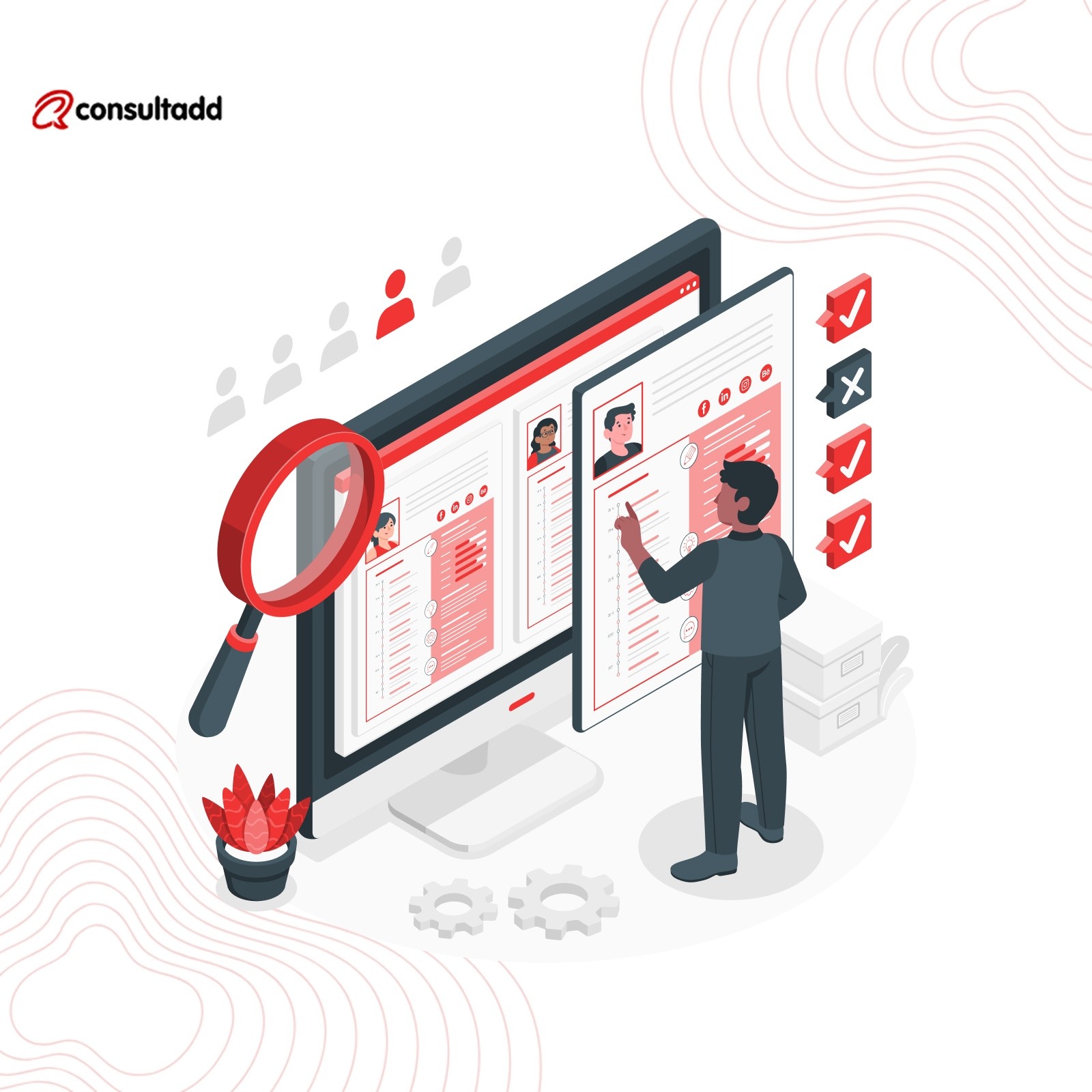
Biggest Challenges Faced by Recruiters and Solutions
TL;DR:
- Attract the Right Talent: Focus on employer branding, job boards, and employee referrals to build a strong talent pool.
- Overcome Talent Shortages: Build proactive relationships, expand your search to passive and international talent, and tap into niche talent pools.
- Streamline the Hiring Process: Shorten interview rounds, automate compliance, and set clear timelines to reduce time-to-hire.
- Manage Candidate Expectations: Communicate clearly, provide regular feedback, and align job realities with candidate expectations.
- Retention Strategies: Offer career development, work-life balance, and regular check-ins to reduce turnover.
How often do you feel like you’re racing against the clock, trying to find the perfect candidate before your competitors? As a recruiter or staffing manager, the pressure is relentless.
Your clients are counting on you to find the perfect candidate, and they want it yesterday. The stakes are high, and every delay in the hiring process feels like a missed opportunity.
But here’s the thing: In today’s fast-paced recruitment world, it’s not just about filling a seat; it’s about doing so quickly and precisely. The demand for top talent is at an all-time high, and the competition? Fiercer than ever.
So, how do you stay ahead and give your clients the best candidates before someone else does?
In this article, we’ll tackle the biggest challenges recruiters face and provide practical, actionable solutions to accelerate your hiring process while maintaining high-quality standards.
Ready to dive in and conquer the recruiting race? Let’s get started!
1. Attracting the Right Talent
Recruiting the best talent starts with a strong foundation. But how do you attract the candidates who truly fit? The process of attracting the right talent has changed.
Key Strategies for Attracting Top Talent:
- Employer Branding: Showcase Your Company's Culture, Values, and Vision.
- Job Boards & Social Media: Maximize exposure by using relevant job platforms and social channels.
- Employee Referrals: Encourage current employees to refer to top talent, as they know the job requirements best.
By ensuring you’re attracting the right candidates from the beginning, you can focus your time and efforts on high-quality applicants. This not only reduces wasted time in the hiring process but ensures you are choosing from the best talent available.
2. Talent Shortages and High Competition
In sectors like tech, talent shortages can be a real pain point. With fewer qualified candidates available, you face the double challenge of speed and quality.
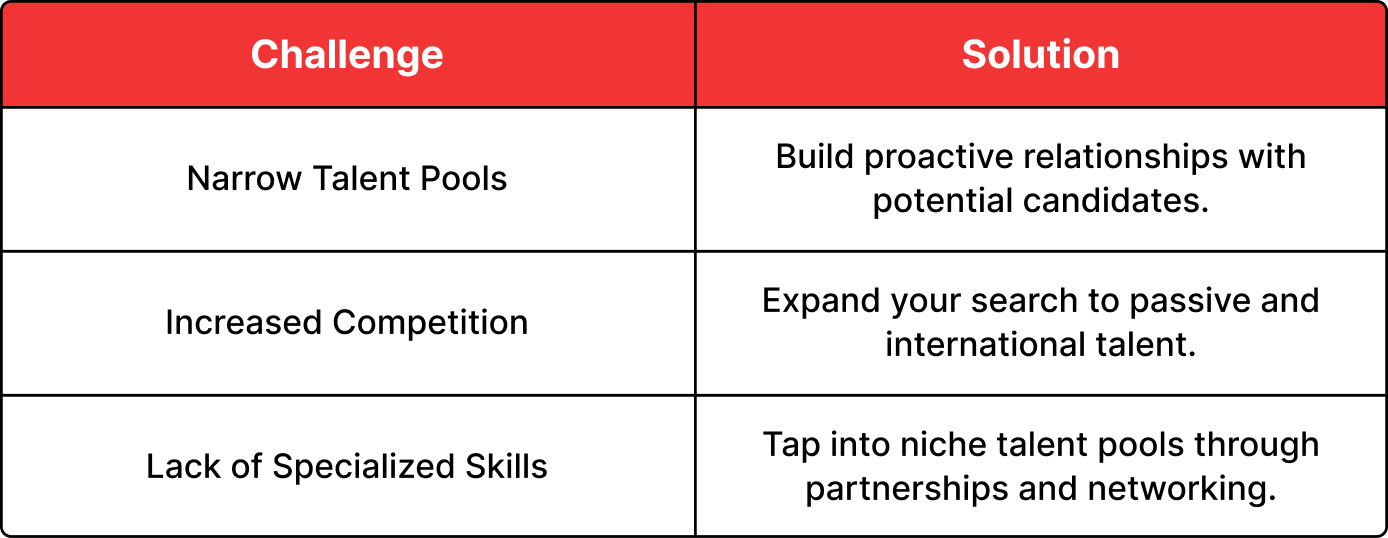
A proactive approach ensures that when talent is scarce, you're not scrambling but are already prepared with candidates ready to jump in.
3. Time-to-Hire Delays
Challenge: Delays in the hiring process lead to missed opportunities and slow client growth.
Solution: Streamlining the hiring process is essential. Shortening interview rounds, eliminating redundant steps, and setting clear timelines ensure decisions are made faster, and candidates are not left hanging. Time is money, and the quicker you move, the better your chances of securing top talent before someone else does.
Want to improve your hiring funnel and optimize every step of your recruitment process? Learn how to master your recruiting funnel strategy here and ensure you're attracting the right candidates efficiently while maintaining high quality.
4. Managing Candidate Expectations
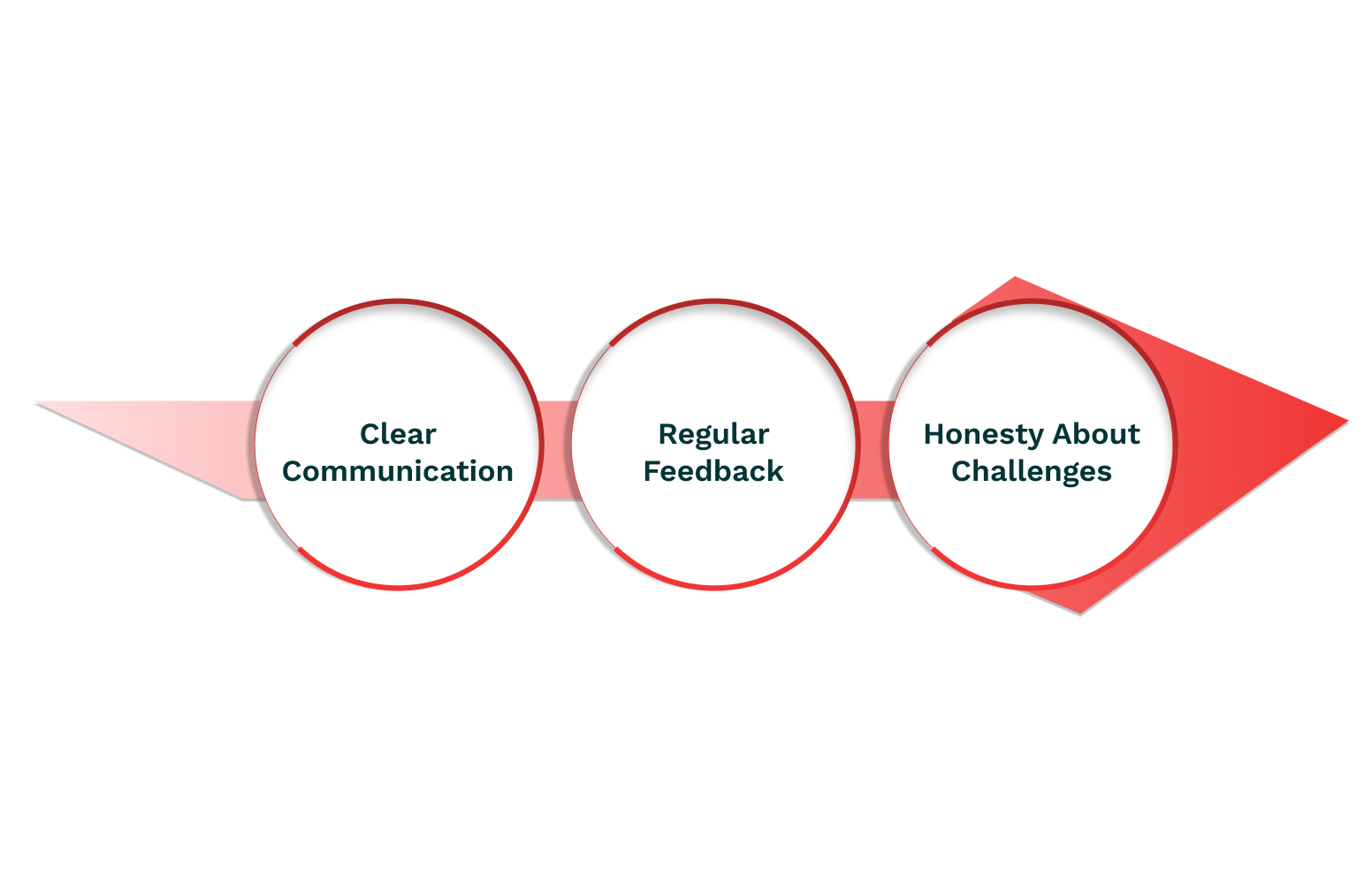
Challenge: Misalignment between candidate expectations and job realities can lead to dissatisfaction post-placement.
Solution:
- Clear Communication: Be upfront about the role, responsibilities, and company culture.
- Regular Feedback: Provide constructive feedback to keep candidates engaged and informed.
- Honesty About Challenges: Clearly communicate to candidates what to expect, particularly regarding job challenges.
Why Is It Important? Managing expectations minimizes the risk of candidates dropping out after placement and ensures a better long-term fit.
5. Retention Challenges: How to Keep Top Talent
Q1: Why is retention such a challenge for recruiters?
Retention is about more than just placing candidates; it’s ensuring they stay long-term. A high turnover rate can disrupt team dynamics and hurt the client’s business, making retention a top priority.
Q2: What are some effective retention strategies?
- Career Development: Offer opportunities for growth and career advancement within the client’s organization.
- Work-Life Balance: Emphasize the importance of flexible work options and personal time to improve employee satisfaction.
- Regular Check-Ins: Stay engaged with candidates even after placement to address any concerns early on.
Q3: Why should recruiters focus on retention?
Focusing on retention not only reduces turnover but also builds stronger relationships with your clients. When your candidates stay longer, it reflects well on you as a recruiter and ensures consistent success for your client’s teams.
Q4: How does retention contribute to long-term client success?
By ensuring candidates remain in the role and thrive, you help build a stable, committed workforce for your client. This stability can lead to better performance, team morale, and reduced recruitment costs in the future.
Focusing on retention strategies benefits both the recruiter and the client by fostering long-term success.
6. Navigating Compliance and Legal Complexities
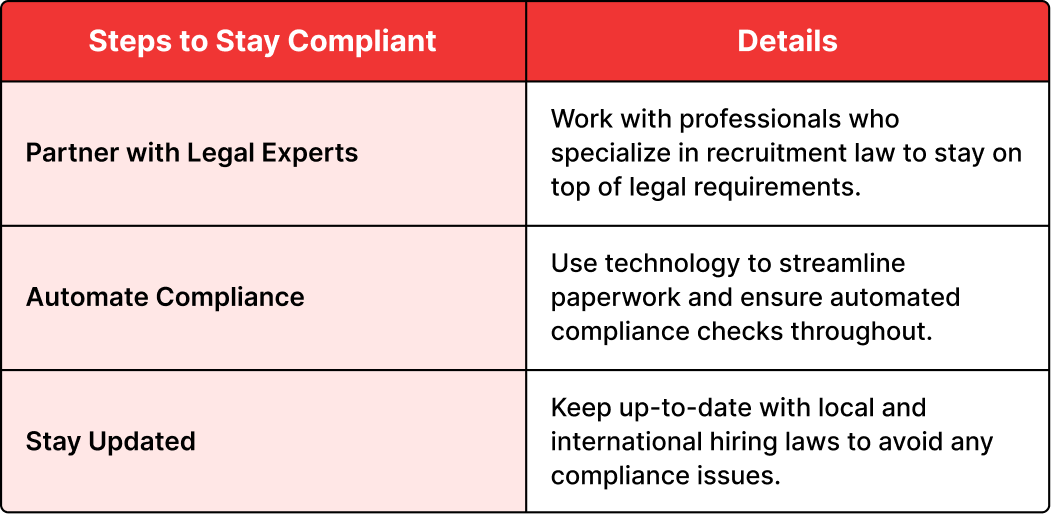
This approach ensures a smooth recruitment process while protecting you and your clients from legal risks.
Want to streamline your hiring process and eliminate the hassle of compliance and delays?
Consultadd offers a pre-vetted pool of highly skilled professionals, ensuring a seamless hiring process that meets your client’s needs quickly and effectively. Contact Consultadd today to enhance your recruitment strategy.
7. Candidate Drop-Offs and Ghosting
We’ve all been there, candidates who go silent or withdraw during the hiring process. This disrupts your recruitment flow and can waste valuable time. Keeping candidates engaged throughout the process can significantly reduce the risk of ghosting and improve candidate retention.
Pro Tip:
- Frequent Communication: Keep candidates engaged with regular updates to maintain their interest.
- Set Clear Expectations: Let them know when decisions will be made and what the next steps are.
By staying proactive and transparent with your candidates, you can minimize drop-offs and ensure a smoother hiring process.
8. Managing Multiple Clients and Expectations
Handling multiple clients at once can overwhelm even the most seasoned recruiters. Balancing different needs while ensuring each client gets the attention they deserve requires a strategic approach.
How to Manage Client Expectations?
- Use Project Management Tools: Track multiple clients’ needs and keep your processes organized.
- Dedicated Account Managers: Assign specific managers to ensure personal attention to each client.
- Clear Communication: Establish realistic expectations and timelines upfront.
Did You Know? By organizing your workflow and managing client expectations from the beginning, you’ll streamline your process and ensure high-quality service. This approach helps you keep your clients happy and your recruitment process efficient.
9. Adapting to Remote Work Trends
Challenge: Remote work is shifting hiring dynamics, and understanding the new requirements for virtual recruitment is essential.
Solution: Embrace the remote shift by offering hybrid or fully remote options, and invest in virtual interview tools. Providing flexibility helps you access a wider talent pool and meet candidate expectations, enhancing satisfaction and reducing drop-offs.
Pro Tip: Ensure your recruitment process is equipped with the right technology to host virtual interviews, screen candidates effectively, and facilitate smooth onboarding.
10. Improving Candidate Engagement
Recruitment is not just about filling roles, it's about building relationships. But how can you keep candidates engaged and committed throughout the recruitment journey when distractions and doubts arise?
What You Can Do:
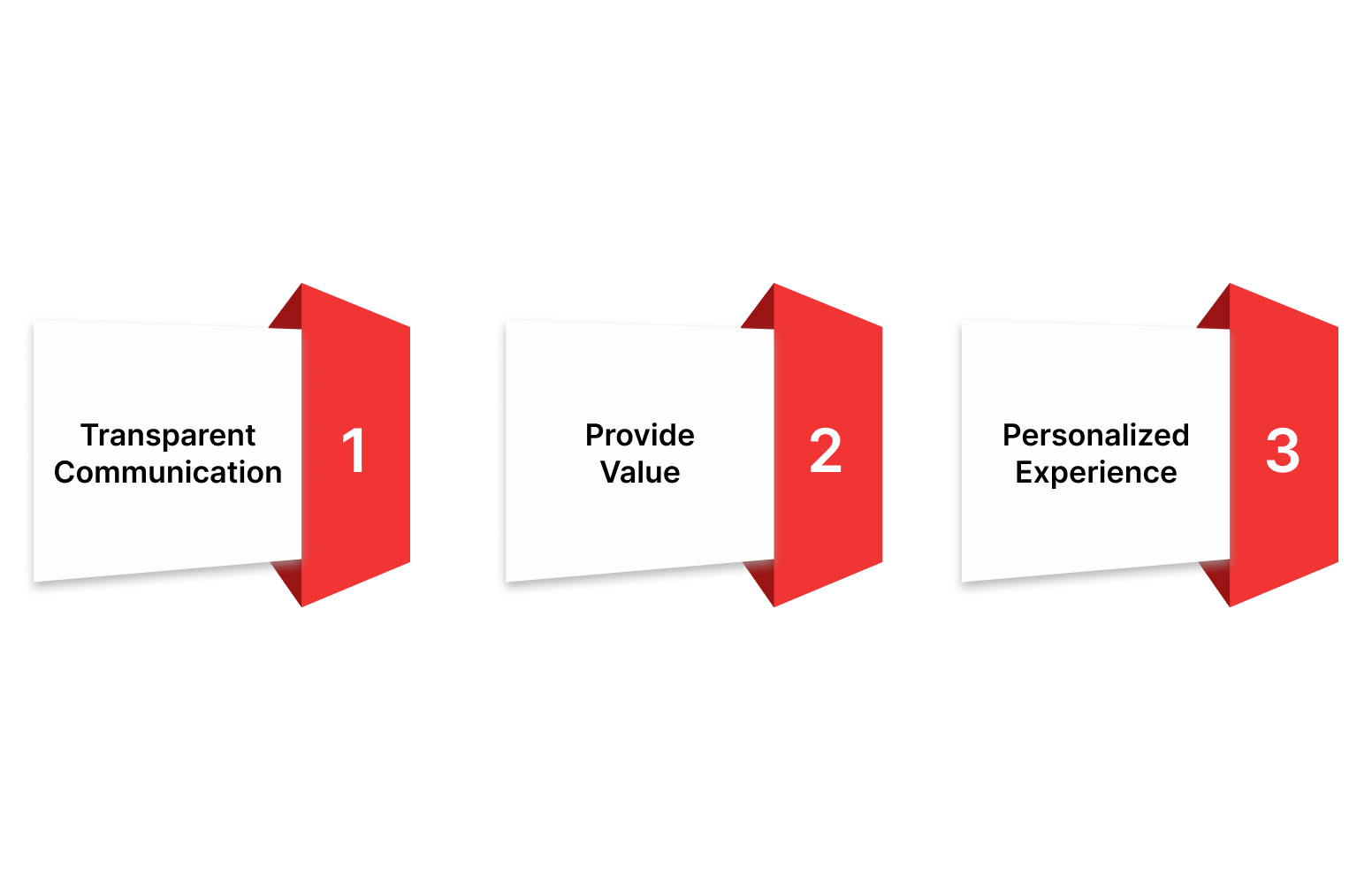
- Transparent Communication: Keep candidates in the loop at every stage, whether it’s about next steps or interview feedback.
- Provide Value: Make the process enjoyable by offering career advice or insights into your company’s culture.
- Personalized Experience: Treat each candidate as a unique individual by tailoring your communication and showing interest in their aspirations.
Did You Know? Candidates who feel valued and informed are 4 times more likely to stay engaged and complete the hiring process.
Want to ensure you're evaluating not just technical skills but also critical interpersonal qualities? Learn why soft skills matter in the hiring process here and how they can enhance your hiring decisions.
Conclusion: Overcome Your Recruiting Challenges with the Right Strategy
Recruiting in 2025 presents numerous challenges, but with the right approach, these challenges can be overcome.
From talent shortages and high competition to time-to-hire delays and managing candidate expectations, the key is adopting strategies that streamline your process and improve efficiency.
Here’s what you can achieve with Consultadd:
- Faster, more reliable hires: Our candidates are thoroughly vetted, so you can place top talent with confidence.
- Minimized turnover risk: We connect you with candidates who are motivated for long-term growth and success.
- Effortless compliance: We handle everything from work authorization to 401(k), saving you time and effort.
- Unmatched speed: Our talent is sourced within 24 hours, meaning you can fill roles faster.
- Dedicated support: Our 1:1 account managers ensure seamless support from start to finish.
- Access to top talent: With over 5,000 successful staffing engagements, we’re trusted by staffing leaders.
By embracing these solutions, you can not only overcome the challenges faced by recruiters today but also transform your process to stay ahead of the competition and deliver superior results.
Want to optimize your recruitment process and reduce hiring delays? With Consultadd, you can access a pre-vetted pool of top-tier professionals who perfectly align with your clients' needs. Contact Consultadd today to elevate your hiring strategy and streamline your recruitment process.
Frequently Asked Questions (FAQs)
1. What is time-to-hire, and why is it important?
Time-to-hire is the period from posting a job to when a candidate accepts the offer. Reducing this time is crucial to securing top talent quickly and reducing missed opportunities.
2. How can I attract the best candidates?
Focus on employer branding, utilize job boards and social media effectively, and encourage employee referrals to bring in high-quality candidates.
3. How can I overcome talent shortages in competitive sectors?
Build relationships with passive candidates, expand your search to international talent, and tap into niche networks to fill roles faster.
4. What strategies can help improve candidate retention?
Offering career development, work-life balance, and regular check-ins with candidates can help ensure they stay longer and succeed in their roles.
5. How can Consultadd help streamline the hiring process?
Consultadd provides a pre-vetted pool of top-tier candidates, fast sourcing within 24 hours, compliance support, and dedicated account managers to ensure a seamless and efficient recruitment process.

Contract to Hire vs Full Time: Key Differences and Benefits for Companies
TL;DR
- Flexibility vs. Stability: Contract-to-hire arrangements offer short-term flexibility and reduced risk, making them ideal for project-based or uncertain roles. Full-time hiring provides long-term stability and deeper organizational engagement.
- Cost and Commitment: Contract-to-hire engineers typically have higher hourly rates with fewer benefits, making them suitable for short-term or budget-conscious hiring. Full-time hires come with more benefits and long-term commitments.
- Use Cases Differ: Contract-to-hire works well for startups, specialized tasks (like cloud or AI projects), and short-term scaling. Full-time is better for core product roles, leadership, and long-term growth.
- Onboarding Focus: Contract-to-hire emphasizes quick integration and deliverables; full-time onboarding includes cultural alignment and long-term development.
- Strategic Fit Matters: The best model depends on your company's stage, project scope, and need for either specialized expertise or institutional knowledge retention. Many businesses find a hybrid approach most effective.
The software industry faces an unprecedented hiring challenge. Traditional recruitment methods struggle to keep pace with rapid technological changes and evolving project demands. We understand how frustrating it can be for staffing agencies and recruiters to navigate these fast-moving demands while trying to secure reliable tech talent quickly and efficiently.
Finding skilled talent quickly without long-term risk is critical for hiring managers, tech recruiters, and staffing agencies. Flexible hiring models like contract-to-hire software engineers have emerged to address these shortages while keeping projects on track.
As remote work and project-based development reshape how tech teams form, businesses now balance immediate needs with long-term strategy. This shift creates fresh opportunities for companies and developers alike.
This blog discusses how contract-to-hire software engineers and full-time hires compare, helping you make smarter hiring choices for your next tech project.
What is a Contract-to-Hire Model?
A contract-to-hire model begins with a temporary contract (typically 3–6 months) where you evaluate an engineer's technical skills, problem-solving ability, and team fit in real time. If both sides are satisfied, the engineer transitions to a full-time role.
For hiring managers and tech recruiters managing fast-changing projects, the contract-to-hire software engineers model offers a smart middle ground between contract gigs and full-time employment.
When It Works:
This hiring model benefits companies when:
- Managing project-based work with shifting deadlines
- Startups need talent without heavy overhead
- Screening senior software engineers for future leadership roles
- Handling specialized work like cloud migration, AI, or DevOps projects
Why It Matters:
It reduces hiring risk while offering flexibility, letting you see how candidates perform in live projects before committing long-term.
What is a Full-Time Hiring Model?
Full-time employment establishes a permanent relationship featuring fixed salaries, benefits, and career growth opportunities, ideal for roles requiring ongoing contribution. A full-time hiring model remains essential for staffing agencies and hiring managers to build stable, long-term tech teams.
When It Works:
Choose this model for:
- Core product development roles
- Technical leadership positions
- Projects demanding long-term system knowledge
- Companies focused on building team culture and knowledge retention
Why It Matters:
Full-time software engineers invest in your company's success, carry institutional knowledge, and drive process improvement, providing lasting value.
Key Differences Between Contract-to-Hire and Full-Time Roles
Understanding the differences between contract-to-hire software engineers and full-time hires helps you choose the right model for each role. This quick comparison highlights how these two hiring models differ in structure, commitment, and risk.
Let's take a closer look at these differences.
Employment Duration Impact
Contract-to-hire offers evaluation periods that benefit both parties. You reduce hiring mistakes while engineers assess company fit before committing to the long term.
Full-time positions offer immediate stability, but they require confidence in your hiring decision. Termination costs and replacement efforts increase with permanent hires.
Benefits and Compensation Differences
Contract-to-hire software engineers often receive higher hourly rates but limited benefits. They typically handle their own insurance, retirement planning, and professional development.
Full-time employees accept lower base compensation in exchange for comprehensive benefits, job security, and career advancement opportunities.
Onboarding and Integration Approaches
Contract-to-hire onboarding focuses on quickly integrating engineers to meet immediate project goals by emphasizing technical requirements and clear deliverable expectations.
Full-time onboarding includes cultural fit, long-term goal setting, and comprehensive training programs that extend beyond immediate project needs.
These structural differences influence how each model serves your business objectives and team dynamics.
Benefits of Hiring Contract-to-Hire Software Engineers
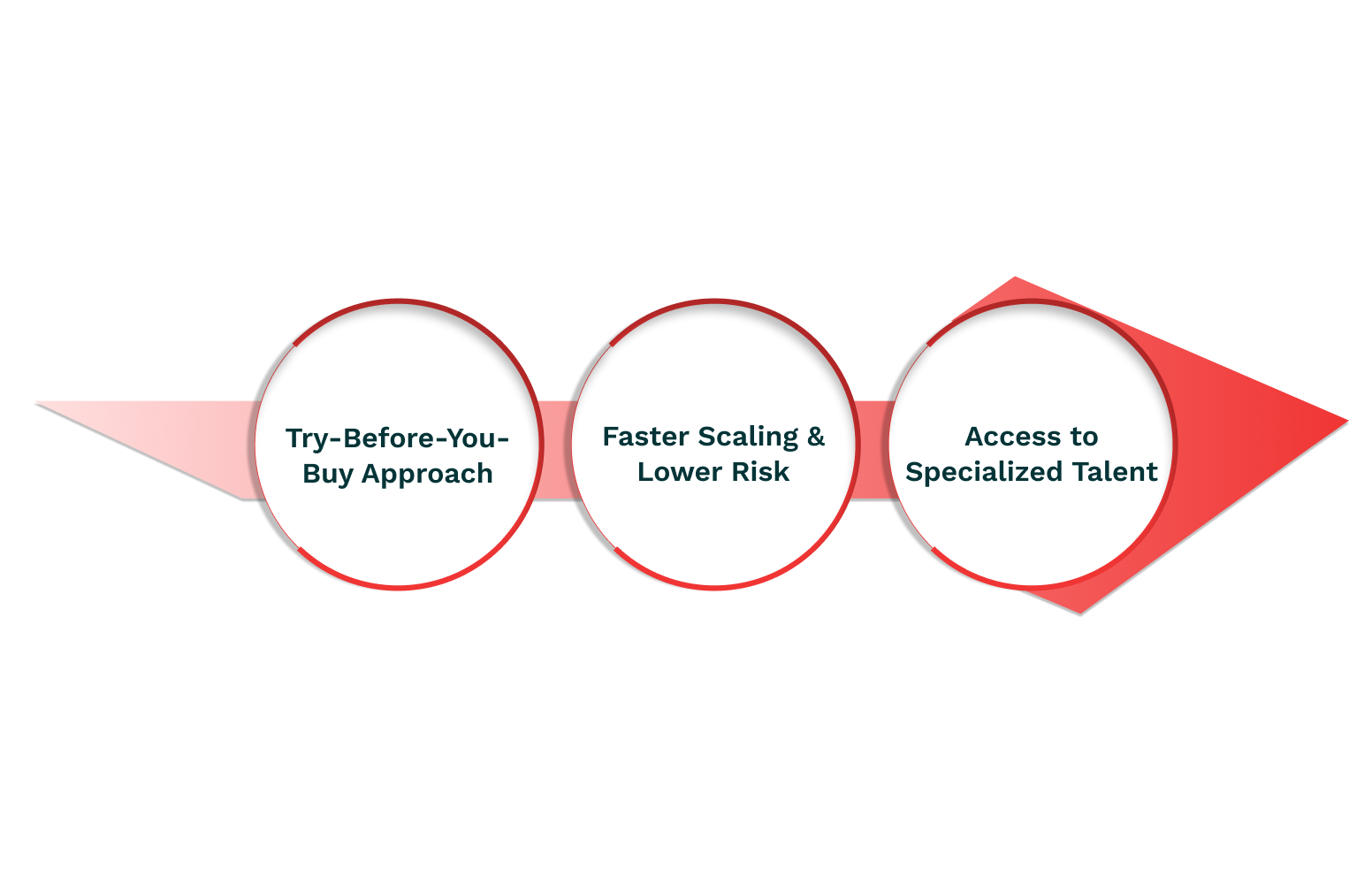
Contract-to-hire arrangements provide strategic advantages for companies seeking flexibility and reduced hiring risks.
Here are a few benefits of onboarding contract-to-hire software engineers:
Try-Before-You-Buy Approach
Observe real work performance rather than relying solely on interviews. Extended evaluation reveals problem-solving skills, communication style, and team fit through actual project work.
Faster Scaling and Lower Risk
- Minimal onboarding for immediate productivity
- Scale teams up or down based on project phases
- Avoid expensive hiring mistakes (150-200% of annual salary)
- Natural contract endings without termination complexities
Access to Specialized Talent
Many experienced software engineers prefer contract work due to its variety and higher rates, which allow access to consultants and specialists, including remote professionals, not typically found in traditional roles, thereby broadening their talent pool.
Need to scale your team quickly with top-tier talent? Tap into Consultadd's network of 800+ verified Full‑Stack, Cloud, and DevOps specialists. With 5,000+ placements and 13 years in the business, hiring managers can onboard proven contract-to-hire software engineers in record time, without long-term risk. Talk to our experts →
Benefits of Hiring Full-Time Software Engineers
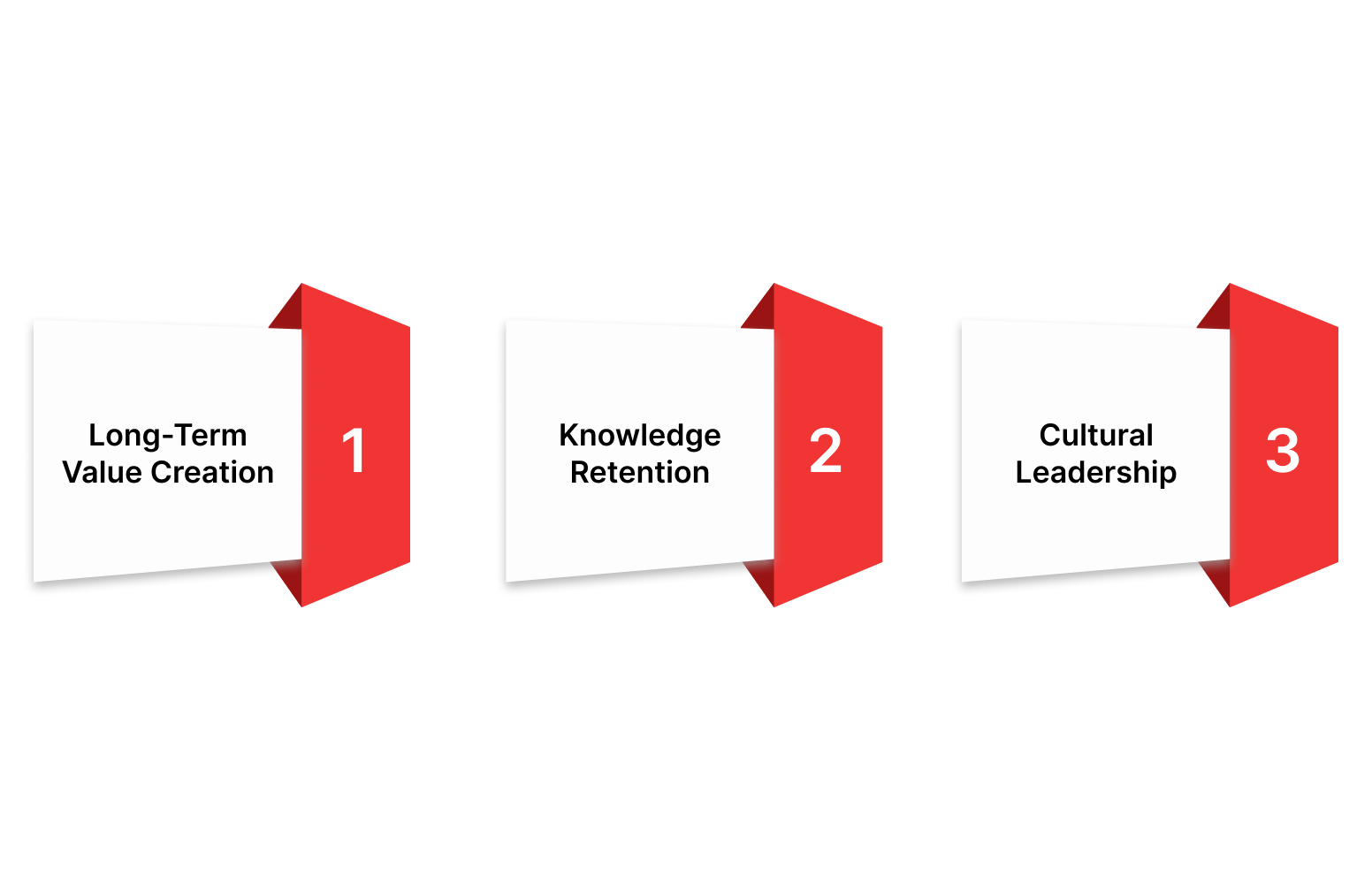
The benefits include:
Long-Term Value Creation
Full-time engineers invest in company success, as their career growth depends on the organization's performance. They develop a comprehensive business understanding that guides strategic technical decisions.
Stability and Knowledge Retention
- Lower turnover reduces recruitment costs
- Accumulated institutional knowledge prevents repeated mistakes
- Experienced members mentor new hires and maintain standards
- Deep system understanding accelerates complex problem-solving
Cultural Engagement and Leadership
Full participation in company culture leads to higher-quality work and stronger collaboration. Engineers contribute to process improvement and drive innovation initiatives that shape the organizational future.
Despite the apparent differences in the two hiring models, the question is:
Which Model is Right for Your Company?
Your optimal hiring approach depends on multiple factors, including project scope, company stage, and strategic objectives. Here's how to make the best decision:
Decision Framework
Consider these factors when choosing:
- Consider your project timeline and complexity when evaluating hiring models. Short-term projects under six months often suit contract-to-hire arrangements better than full-time commitments.
- Budget constraints and cash flow patterns influence your choice. Contract-to-hire provides predictable costs without long-term benefit obligations.
- Skill requirements matter significantly. Specialized expertise for specific projects works well with contract arrangements, while core competencies benefit from full-time development.
Company Growth Stage Considerations
- Early-stage startups benefit from contract-to-hire flexibility as product requirements and team needs remain uncertain. You can adjust quickly without significant restructuring costs.
- Growth-Stage Companies might blend both models, using contract-to-hire for scaling while maintaining full-time core teams for stability and culture building.
- Established Enterprises typically prefer full-time engineers for strategic roles while using contract-to-hire for specialized projects or temporary capacity increases.
Team Structure and Scalability Needs
- Small teams require versatile engineers who can handle multiple roles. Full-time hires often provide better value for these generalist positions.
- Large development teams can accommodate specialized contract engineers alongside full-time core members. This hybrid approach strikes a balance between flexibility and stability.
- Remote-first companies find contract-to-hire arrangements easier to manage since location independence reduces onboarding complexity.
Use Case Examples
- MVP Development: Startups use contract-to-hire for minimum viable products without long-term commitments
- Cloud Migration: Companies hire contract specialists for 6-12 month projects, then evaluate for permanent roles
- Team Scaling: Growing firms rapidly expand capacity during funding rounds, converting successful contractors
- Specialized Features: AI or blockchain development often starts with contract specialists before building internal expertise.
Conclusion
Contract-to-hire and full-time models each serve distinct business needs. Contract-to-hire provides flexibility and reduced risk for specialized projects or uncertain conditions. Full-time employment creates stability and builds institutional knowledge for core development needs.
Consultadd acts as your behind-the-scenes tech talent partner, helping staffing agencies access pre-vetted software engineers for both contract-to-hire positions. With over 13 years of experience and 5,000+ successful placements, we streamline your hiring process while reducing risks and administrative burden.
Our Services Include:
- Access to 800+ verified Full-Stack, Cloud, and DevOps professionals
- Comprehensive candidate screening and background verification
- Interview coordination and visa compliance management
- Dedicated account management for personalized hiring strategies
- Complete administrative support, including payroll, benefits, and compliance
- Ongoing candidate monitoring and performance tracking
Contact Consultadd today to discuss your hiring needs and access our network of pre-vetted software engineering professionals. Our expert team will help you connect with top-tier talent that drives your business forward.
FAQs
1. What does "contract-to-hire" mean?
It's a hybrid employment model where a candidate starts in a temporary contract (usually 3–6 months) before transitioning to full-time if both parties agree.
2. What are the pros and cons of contract-to-hire for engineers?
Pros: You can evaluate company fit firsthand, often earn a higher hourly rate, and still access benefits via the contracting agency.
Cons: There's no guarantee of permanent placement, and compensation may fluctuate depending on contract structure.
3. How much extra should contractors budget for taxes?
If you work as a 1099 contractor, plan for self-employment taxes (~15%), including Social Security and Medicare.
4. What questions should candidates ask before accepting a contract-to-hire role?
Key questions include contract duration, evaluation criteria, timeline for conversion to full-time status, benefits eligibility, and end-of-contract expectations.
5. When is contract-to-hire a good strategy for companies?
It's particularly effective for short-term project needs, skill requirements, budget flexibility, or when companies want to mitigate hiring risks before committing to a long-term arrangement.
6. What type of candidates are best suited for contract work?
Contract roles often appeal to experienced engineers (typically those with 5+ years of experience), especially those who are comfortable with variability, independent work, and rapid transitions.
7. What happens if the contract ends without full-time conversion?
If conversion doesn't occur, the contract simply expires. Employers may re-engage the contractor, extend the contract, or end the relationship. Contractors should prepare for transition or pursue other opportunities.

The Ultimate Guide for Technical Recruitment Success
Hiring for technical roles is not the most difficult task. But hiring the right talent, quickly and consistently, presents a different challenge. You can try everything yet still struggle to identify the right fit.
The difficulty is not merely a lack of available talent. More often, the real obstacles are unclear role definitions, inappropriate expectations, generic approach to outreach, and ineffective screening methods. Many organizations treat speed and quality as mutually exclusive when recruiting for technical roles. In reality, a well-structured hiring strategy can and should deliver both.
This is where most hiring strategies fall short—and where yours can stand out.
This blog is your guide for technical recruitment that actually delivers results. Whether you're scaling a startup or hiring for enterprise systems, this guide gives you the clarity to act and hire smarter. Let’s begin.
What is Technical Recruitment and Who is a Technical Recruiter?
Technical recruitment refers to the process of sourcing, screening, and hiring candidates specifically for technology-focused roles, such as software engineers, DevOps specialists, data scientists, and systems architects. Unlike general recruitment, technical hiring involves understanding complex skill sets, evolving tech stacks, and the unique dynamics of engineering teams.
A technical recruiter is a specialized hiring professional who bridges the gap between technical requirements and talent acquisition. They don’t just post job ads; they:
- Understand programming languages, frameworks, and infrastructure tools.
- Communicate effectively with engineering managers and hiring stakeholders.
- Evaluate both hard skills (e.g., coding, systems design) and soft skills (e.g., team collaboration, adaptability).
- Actively source from non-traditional channels like GitHub, Stack Overflow, and tech forums.
Why Technical Recruitment is Different

Hiring for technical roles isn’t just about filling seats but about building future-ready teams with specialized skill sets. Here's why technical hiring stands apart:
- Skill Precision Over Job Titles: A backend engineer in Java is very different from one in Node.js. Thus, role clarity is crucial.
- Constantly Evolving Tools & Tech: Technologies change fast. Your hiring strategy needs to keep pace.
- Longer Time-to-Hire: Technical roles take an average of 48 days to fill, delaying product cycles and team momentum.
- Higher Turnover Risks: Poor matches result in rapid exits. Misalignment costs time, money, and morale.
- Niche Talent Pools: Top tech talent isn’t actively applying; they’re contributing on GitHub or chatting on Discord.
- Strategic Hiring Required: A wrong hire can stall months of work. You need a structured, informed process.
Partner with Consultadd to streamline your technical recruiting and find top-tier talent.
How Technical Recruitment Works?
While every organization tailors its approach to suit its goals, most successful hiring cycles follow a clear sequence of steps. Here’s how the technical recruitment process typically unfolds:
- Understanding the Job Requirements: Hiring teams must define the skills, experience, and qualifications required for the role. This includes technical proficiencies, soft skills, and alignment with business goals.
- Sourcing Candidates: Leverage a combination of job boards, LinkedIn, internal referrals, tech communities, and niche platforms like GitHub or Stack Overflow. The key is reaching both active and passive candidates through the right channels.
- Screening Resumes: Evaluate applications to shortlist those who closely match the defined criteria. At this stage, pay attention to relevant experience, project scope, technical stack familiarity, and any red flags or gaps.
- Initial Interviews: Invite shortlisted candidates for a preliminary phone or video interview. This helps assess their communication skills, basic technical understanding, and overall cultural fit. It also gives candidates a chance to understand the role and company better.
- Technical Assessments: To validate capabilities, assign practical tests, such as coding challenges, system design tasks, or debugging scenarios. These assessments offer insights into problem-solving ability and technical depth.
- Final Interviews: Top-performing candidates progress to second-round or in-person interviews with hiring managers or technical leads. These sessions dive deeper into technical expertise, collaboration style, and long-term potential within the team.
- Reference Checks: Before making a final decision, connect with former managers or colleagues to verify employment history, assess work ethic, and validate strengths or concerns that emerged during interviews.
- Job Offer: Once the right candidate is identified, an offer is extended with clear details about salary, benefits, role expectations, and start date.
- Onboarding: This includes setting up tools, introducing team members, providing access to training materials, and offering early support to help them ramp up quickly.
Ready to enhance your recruitment process? Let Consultadd help you hire the best tech professionals.
Moving ahead, let’s look at the five pillars that can strengthen your technical hiring strategy and make it truly scalable.
The 5 Pillars of a Successful Technical Hiring Strategy

Technical hiring works best when it's built on structure, not shortcuts. You’re not just hiring talent; you’re assembling a team that can ship, scale, and solve real problems. These five pillars form the foundation of a high-impact hiring strategy—one that helps you hire right the first time.
1. Precision in Role Mapping
Technical hiring starts with clarity. Don’t just go by job titles—define exactly what the role needs to achieve and the skills required. Whether it’s cloud infrastructure or feature development, every goal needs specific capabilities. Clear talent mapping ensures internal alignment and avoids mismatched hires.
2. Smart Talent Sourcing
Great sourcing means knowing where your ideal candidates are—not just on job boards, but in active communities like GitHub, Stack Overflow, or niche Slack groups. Tailor your outreach to speak to what matters: the tech stack, career growth, and culture. The right message in the right place brings better results.
3. Screening for Skills, Not Jargon
Jargon doesn't build software, skills do. Focus on role-specific assessments that mirror real work. Ask developers to code, DevOps candidates to deploy, and architects to think through systems. Use tools to help, but make final decisions based on output, not keyword matches.
4. Candidate-Centric Experience
Your process is part of your brand. Delays, unclear steps, or poor communication can turn off top candidates fast. Create a smooth experience with quick responses, consistent feedback, and clear timelines. Post-offer, keep engagement high to ease onboarding and build early loyalty.
5. Optimize, Scale, Repeat
Hiring is never static. As your team grows, refine your process using real metrics like cost-per-hire, source effectiveness, and candidate quality. Use simple dashboards to track progress and make data-informed adjustments. What works for five hires won’t scale to fifty, so iterate constantly.
Transform your tech recruitment process with Consultadd’s expert staffing solutions.
Next, let’s look at the most common hiring mistakes and how you can avoid them before they cost you top talent.
Common Mistakes Companies Make And How You Can Avoid Them
Even the best hiring teams slip up. Speed, pressure, and competition can push you toward easy shortcuts. But when it comes to tech hiring, those shortcuts cost you the right people.
In this section of the guide for technical recruitment, you’ll see the most common mistakes and exactly how to avoid them.
1. Using Copy-Paste Job Descriptions
Recycling old job descriptions or pulling templates off the internet results in vague, generic posts that fail to resonate with serious tech talent. Developers want to know what they’ll work on, not read buzzwords like “rockstar coder” or “ninja.” A misaligned description attracts the wrong applicants—or worse, drives away the right ones.
What to Do: Customize each listing to the specific role and project. Outline real responsibilities, the tech stack, and how the work contributes to company goals. Use input from your engineering team to ensure the description is accurate and relevant.
2. Expecting Too Much from Junior Talent
Hiring junior candidates but expecting them to operate like seasoned engineers is a recipe for failure. Without proper guidance, junior hires can get overwhelmed, make costly mistakes, or leave prematurely due to stress and lack of support.
What to Do: Accurately define the level of experience required. For junior hires, offer mentorship opportunities, structured onboarding, and manageable tasks. Treat them as long-term investments, not quick fixes.
3. Letting the Hiring Process Drag
A drawn-out hiring cycle with unclear steps or delayed communication sends the wrong signal to candidates. In-demand professionals often juggle multiple offers, and slow responses make your company appear indecisive or unorganized.
What to Do: Create a defined hiring process with clear stages and timelines. Assign accountability for each step and ensure fast, meaningful feedback. Even a timely “no” is better than silence. It shows professionalism and respect.
4. Ignoring Cultural Fit During High-Growth Phases
When scaling fast, it’s tempting to prioritize technical ability and skip soft-skill evaluations. But culture mismatches, differences in work style, communication, or values can derail team cohesion and affect long-term performance.
What to Do: Define your team’s core values and collaboration style, then assess for cultural alignment during interviews. Use behavioral questions and team-based scenarios to evaluate how a candidate might integrate into your environment.
Unlock your recruiting potential with Consultadd's expert technical staffing solutions.
5. Relying Too Heavily on Resume Keywords
Filtering candidates strictly by keywords like “Java,” “Python,” or “5+ years” can overlook strong contenders who don’t use the exact phrasing but have real skills. This approach often favors flashy resumes over real capability.
What to Do: Look beyond checkboxes. Prioritize practical skills through coding challenges, project reviews, or technical interviews. Stay open to non-traditional backgrounds—problem-solving ability often outweighs pedigree.
6. Not Involving Technical Teams Early
When recruiters handle hiring alone without input from the engineering team, it often leads to role mismatches. Candidates may meet HR criteria but fail to deliver on technical expectations, resulting in frustration on both sides.
What to Do: Involve technical leads from the start in writing job descriptions, screening resumes, and shaping interview questions. Their insights ensure a tighter match between candidate skills and real-world needs.
7. Skipping Technical Assessments or Using Poor Ones
Some companies either skip technical assessments altogether or use irrelevant, outdated, or overly academic ones. This fails to measure the candidate’s real-world capabilities and can either let underqualified candidates through or drive strong ones away due to frustration.
What to Do: Use assessments that reflect actual work the candidate will be doing, such as debugging tasks, architecture reviews, or building small features. Keep them time-bound, relevant, and respectful of the candidate’s time.
8. Not Selling the Role or Company Effectively
Technical talent is in high demand, and companies often forget they’re not just evaluating candidates; the candidates are evaluating them too. If you don’t clearly communicate the role’s value, company mission, or growth opportunities, you risk losing top talent to more compelling offers.
What to Do: Train interviewers to “sell” the opportunity authentically. Share meaningful details about the team, tech stack, challenges, and long-term vision. Candidates want to see where they can grow and make an impact.
9. Ignoring Candidate Experience
Clunky application portals, delayed responses, and robotic communication give candidates a negative impression, even before the interview begins. This damages your employer brand and can turn away quality applicants before you ever meet them.
What to Do: Make the application process seamless. Acknowledge applications, keep candidates informed, and personalize communication where possible. A strong experience, even for rejected candidates, boosts your reputation in the talent market.
Most of these mistakes come from rushing or relying too much on outdated processes. Avoiding these can help you see better hiring results.
How to Build a High-Performing Tech Team—Fast
Speed is critical in tech hiring. But if you move too fast, you risk hiring the wrong fit. It doesn’t have to be that way. This part of the guide for technical recruitment focuses on how to build a strong tech team quickly, without compromising on standards.
Speed vs. Quality Doesn’t Have to Be a Trade-Off
Every business wants to hire quickly. But when hiring tech talent, rushing in can backfire. You need someone who can build, scale, or secure core systems. Without proper screening or alignment, hires fall short, especially in high-impact roles like DevOps, backend, or data engineering.
Moving faster without sacrificing quality starts by rethinking the hiring flow.
Critical Success Factors
Want to hire better, faster, and consistently? These four factors make the difference.
1. Clear Requirements and Team Alignment
Ambiguity slows hiring. When managers aren’t aligned on what they need, recruiters chase the wrong profiles. Define the must-haves and deal-breakers early.
Create a hiring scorecard. Agree on stack, experience level, and soft skills. This helps avoid friction later in the funnel.
2. Smart Sourcing and Targeted Outreach
You won’t find the best engineers by scrolling LinkedIn endlessly. Technical talent often hangs out in specialized spaces like GitHub, Stack Overflow, Reddit threads, and Discord channels.
We also engage passive candidates through reputation-based outreach. They may not be actively job-hunting, but they’re open to the right offer.
Accelerate your tech hiring with Consultadd's tailored recruitment strategies.
3. Real-World Technical Screening
The wrong assessments kill momentum. Tricky brain teasers or irrelevant questions drive candidates away. Instead, assess how they’d solve problems your team actually faces.
We focus on practical tasks: writing code, reviewing architectures, or designing for scalability. This helps you see how they think, not just what they know.
Every candidate submitted by Consultadd goes through this vetting first. You get engineers who’ve already proven their ability to deliver.
4. Fast Feedback Loops and Decision-Making
Speed to hire isn’t just about sourcing. It’s about how fast you move after interviews begin. Delayed feedback loses top talent.
We recommend setting internal SLAs: 24 hours for feedback, 48 hours for decision-making. This keeps candidates engaged and ensures momentum.
Consultadd’s recruiters help you manage this process end-to-end, so nothing stalls.
Bonus Tip: Use a Hybrid Hiring Model
One size doesn’t fit all. Sometimes you need full-time engineers. Other times, short-term contractors or remote developers work better.
Mixing permanent, contract, and contract-to-hire roles gives you agility without bloating your team.
For example, if you're scaling for a product launch, contract engineers help you move quickly without long-term overhead. If they perform well, convert them later.
Consultadd supports this model, providing vetted candidates across all engagement types.
Results You Can Expect:
- 30–50% reduction in time-to-hire
- Improved retention thanks to better alignment and onboarding
- Immediate productivity with ready-to-deploy contract talent
This ensures you hire better, faster, and smarter.
Consultadd is your go-to partner for filling your tech roles with top talent, fast!
Build Smarter Tech Teams With Us
Technical hiring is no longer just about filling vacant roles; it’s about building high-performing, future-ready teams. From defining clear role requirements to streamlining screening and delivering a strong candidate experience, every step matters. Mistakes like vague job descriptions, unrealistic expectations, and delayed feedback loops can quickly derail your hiring goals.
We hope this guide for technical recruitment helps you avoid those pitfalls and create a hiring process that’s structured, scalable, and aligned with your business needs.
If you're looking to improve how you hire tech talent, whether for permanent, contract, or contract-to-hire roles, Consultadd can support you with the right mix of consulting, sourcing, and screening expertise. We offer custom hiring solutions, talent pipeline support, and technical vetting services to help fast-growing companies build reliable engineering teams without the guesswork.
Ready to hire better and faster? Contact Us Now>>
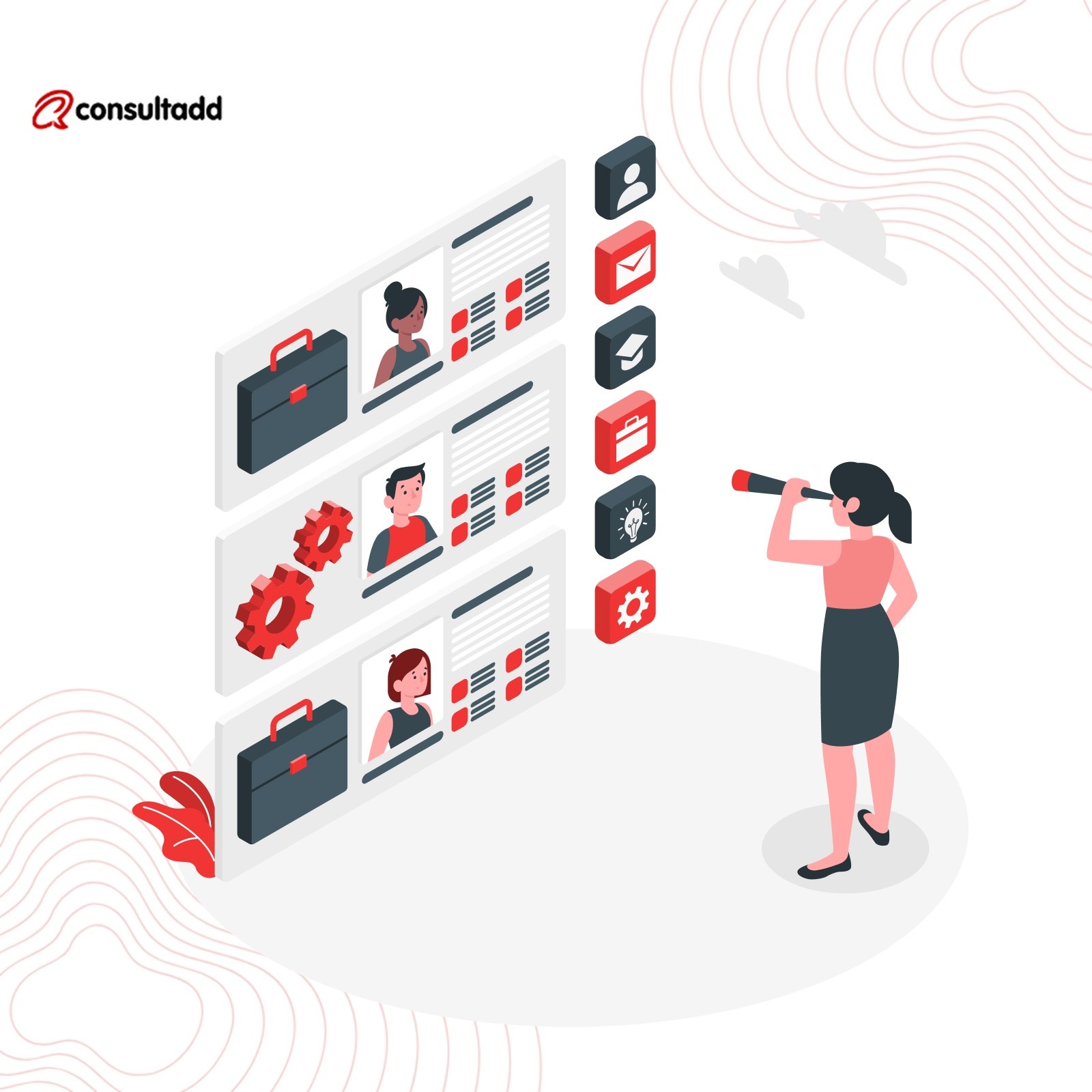
Building Your Tech Talent Pipeline Strategically
TL;DR:
- Building a strategic tech talent pipeline is essential for staffing agency success.
- Identify in-demand skills like Full-Stack Development, Cloud, DevOps, and Cybersecurity to stay ahead.
- Invest in training and upskilling to keep candidates market-ready and competitive.
- Foster mentorship and create clear career advancement paths for long-term retention.
- Promote diversity, equity, and inclusion (DEI) to expand your talent pool and enhance problem-solving.
- A proactive approach helps reduce time-to-hire, improve candidate quality, and better match client needs.
Are you tired of constantly scrambling to find the right tech talent, only to end up with unqualified candidates or long hiring delays?
As a recruiter or staffing professional, we know that this process can feel like an endless cycle, leaving you frustrated and your clients waiting.
What if there was a way to change that? Imagine having a steady stream of pre-vetted, ready-to-hire talent at your fingertips, no more chasing candidates or dealing with time-consuming vetting.
Building a strong tech talent pipeline is the key to making this happen. It’s about ensuring you have access to the best candidates, whenever you need them, without the usual headaches.
Let’s take a closer look at what a tech talent pipeline is and why it’s so important for your agency.
What is a Tech Talent Pipeline and Why Does it Matter?
A tech talent pipeline is more than just a list of candidates, it’s a strategic approach to sourcing and engaging with the right talent before you even need them.
Think of it as a continuous flow of qualified, ready-to-hire professionals that ensures your staffing agency is always prepared, no matter what the demand looks like.
Why a Tech Talent Pipeline is Crucial
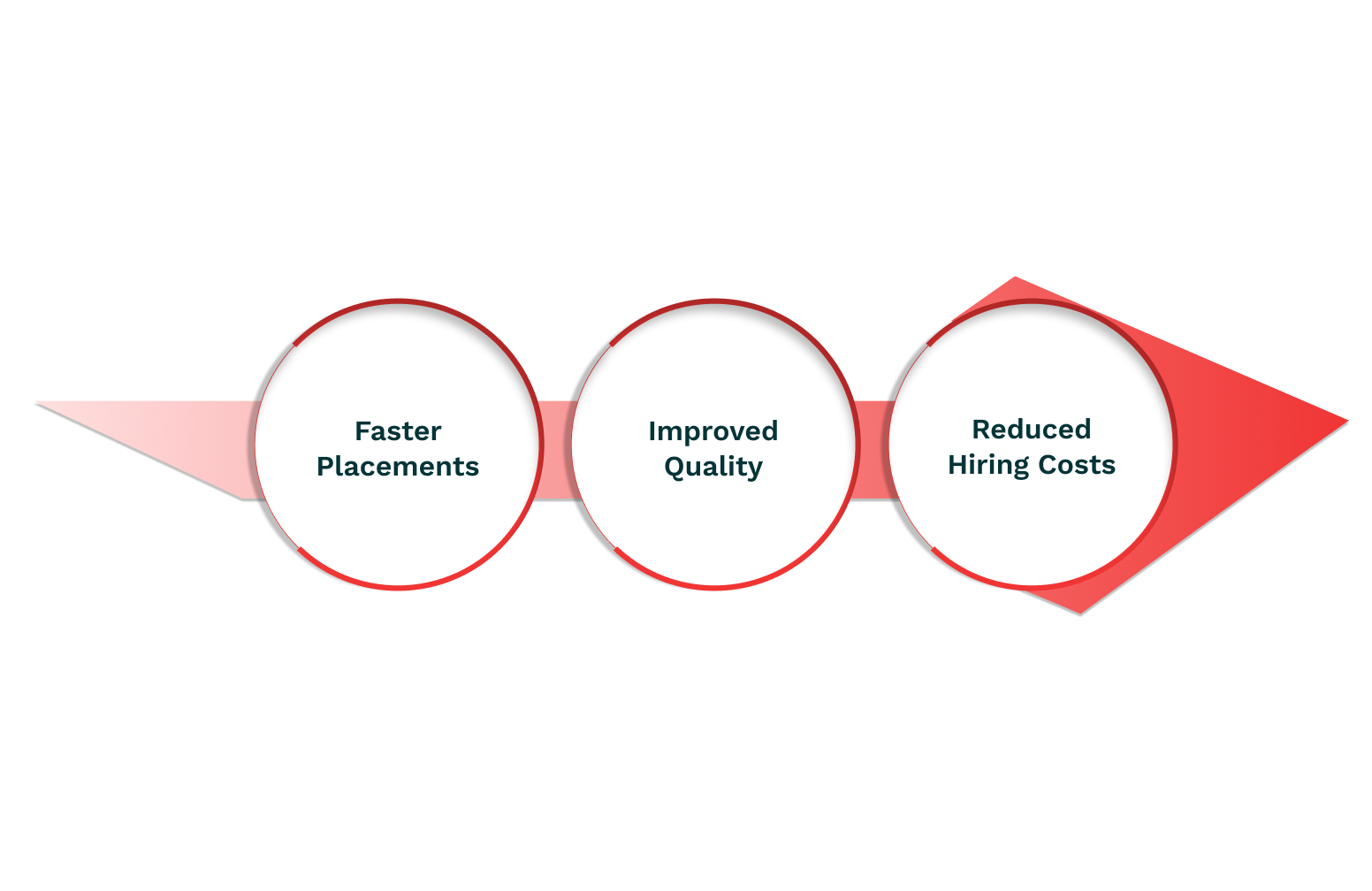
1. Faster Placements
With a strong pipeline, you’re never scrambling for candidates at the last minute. Your team can place the right talent quickly, keeping clients happy and the process smooth.
2. Improved Quality
A well-developed pipeline ensures that every candidate has been vetted for skills, experience, and cultural fit. You’re not just filling roles; you’re matching top talent with the right opportunity.
3. Reduced Hiring Costs
When you have a pre-vetted pool of candidates, you cut down on the costs of sourcing, interviewing, and onboarding. It saves time and money for your agency, and your clients.
The Impact on Agency Performance
Building a tech talent pipeline doesn’t just help you fill roles faster; it transforms your entire recruitment process. With a continuous flow of qualified professionals, your agency becomes more agile, efficient, and responsive to client needs.
This proactive approach allows your agency to be ready for the next big demand, without feeling the stress of urgent hiring. Instead of reacting to requests, you’re positioned to deliver quickly and confidently.
Now, let’s get into how you can start building your tech talent pipeline strategically.
Understanding the Tech Talent Landscape
The tech talent market is constantly shifting. With new technologies emerging, and industries evolving, the demand for high skilled professionals continues to soar.
But this presents a challenge for staffing agencies: how do you stay ahead and meet the evolving needs of clients?
The Growing Demand for Tech Talent
- Increased Hiring Demand: Companies across all industries are seeking tech professionals to drive innovation. Roles in Full-Stack Development, Cloud Computing, and DevOps are in high demand.
- Skills Shortage: Despite the growth in tech job opportunities, the supply of qualified candidates hasn’t kept pace. It’s becoming harder to find tech talent with the right skills.
- Fast-Paced Change: As technologies evolve, the need for specialized skills, such as AI, machine learning, and cybersecurity, grows, pushing agencies to stay on top of emerging trends.
Key Challenges in the Tech Talent Landscape
To meet the demands of today’s market, staffing agencies must be agile, proactive, and prepared.
Being proactive means faster hiring, better matches, and stronger, longer-lasting relationships with your clients. It’s a strategy that makes your agency more agile, efficient, and ultimately more successful.
Let’s understand how you can start building a tech talent pipeline that keeps you ahead in this competitive market.
For more on building a strong staffing strategy, check out our guide on Creating a Strategic Talent Management Framework for 2025. It’s packed with actionable tips to help you stay ahead of the curve!
How to Build Your Tech Talent Pipeline Strategically
Building a strong tech talent pipeline is more than just filling positions as they open. It’s about creating a continuous flow of top-tier, pre-vetted candidates that you can turn to whenever a need arises.
By taking a strategic approach, your staffing agency can stay ahead of the curve, keep clients happy, and reduce the stress that comes with urgent hiring needs.
Here’s how to build your tech talent pipeline the right way, step by step.
1. Identify Key Skills and Roles
First things first, know exactly what you need. Without a clear understanding of the skills and roles that are in demand, you’ll end up wasting time chasing the wrong candidates.
Key Tech Skills to Watch:
- Full-Stack Development: The demand for developers who can handle both front-end and back-end work is skyrocketing.
- Cloud Computing: As businesses move more to the cloud, there’s an ever-growing need for cloud specialists.
- DevOps: Companies want to speed up their development cycles, making DevOps professionals essential for smoother processes.
- Cybersecurity: With rising data threats, cybersecurity experts are in high demand across all industries.
By identifying these key skills early, you can start sourcing talent that meets these needs, creating a more targeted and effective pipeline.
2. Engage in Workforce Planning
Planning for the future is a game-changer. Workforce planning is about understanding not just the current talent needs, but also anticipating what your clients will require down the line.
Questions to Ask Yourself:
- What industries are growing? Look at sectors that are rapidly expanding, such as tech startups, healthcare, or fintech.
- What are your clients’ upcoming projects? If your client plans to scale or launch a new product, start thinking about what roles they’ll need.
- What skills will become critical? Emerging trends like AI and blockchain are shaping future job requirements.
Pro tip: Workforce planning helps avoid the stress of urgent hiring and ensures you're always one step ahead in meeting client demands.
3,. Develop Robust Training and Upskilling Programs
A strong tech talent pipeline isn't just about recruiting; it's also about development. By investing in training and upskilling, you can ensure that your talent remains relevant and market-ready.
Providing these opportunities to your candidates ensures that you’re not just filling roles, but helping people grow within your pipeline.
4. Foster a Culture of Continuous Learning
Tech doesn’t sit still, and neither should your candidates. A continuous learning environment not only boosts morale but also keeps your talent ahead of the game. Encouraging your talent to stay updated with new tools and trends is a win for both them and your clients.
Why This Helps:
- Higher Retention: Candidates stay engaged and loyal when they feel they’re continually improving.
- Better Matching: The more skills your candidates have, the better they can match the evolving needs of your clients.
- Competitive Edge: Agencies with candidates who are always learning are more likely to win contracts with clients looking for the latest skills.
5. Establish Mentorship and Sponsorship Programs
Mentorship and sponsorship are powerful tools to nurture talent and build long-term loyalty. They go beyond just job training, they provide the support needed for personal and professional growth.
6. Create Clear Career Advancement Paths
Everyone wants to know they’re moving forward. Building a clear career path for your candidates gives them direction and purpose, making them feel invested in their own success.
Simple Career Path Framework:
Entry-Level: Develop foundational skills and get comfortable with core tasks.
Mid-Level: Take on more responsibility and grow specialized skills.
Senior-Level: Take on leadership roles and mentor others in the pipeline.
A clear career path not only motivates candidates but also ensures that you’re building a long-term talent pool for your agency and your clients.
7. Strengthen Entry-Level Onboarding Processes
Onboarding is your new hire’s first real experience with your agency, and it’s crucial.
A smooth, welcoming onboarding process helps new employees feel at ease and confident from the start, which makes a big difference in how quickly they adapt and how long they stay.
To make the process as seamless as possible, start by creating a welcoming environment where they feel part of the team from day one.
Make sure expectations are clear, let them know what their roles are, what tools they’ll be using, and what’s expected from them.
Lastly, provide all the resources they need to succeed right away. Whether it’s training materials, tech setups, or introductions to their team, make sure they have everything they need to hit the ground running.
Pro Tip: Regular check-ins during onboarding help spot challenges early, boosting engagement and retention
8. Leverage Partnerships with Educational Institutions and Certification Providers
Partnering with educational institutions, coding bootcamps, and certification providers is an effective way to ensure a steady pipeline of qualified candidates.
These partnerships not only bring you access to fresh talent but also guarantee that candidates are well-prepared to meet the demands of the job market.
Here’s why these partnerships are valuable:
- Coding Bootcamps: Many bootcamps focus on teaching in-demand skills like Full-Stack Development and Data Science, giving you access to ready-to-hire professionals who are well-versed in the latest tech.
- Universities: Partnering with universities, especially tech-focused ones, opens the door to eager, newly-graduated candidates who are looking to dive into the workforce.
These partnerships also create a pathway for candidates to gain certifications, keeping them market-ready and in demand.
9. Promote Diversity, Equity, and Inclusion (DEI)
Promoting DEI isn't just about doing what's right, it also has significant benefits for your talent pipeline and agency success. Here’s how focusing on DEI can make a real difference:
By promoting DEI, your agency not only contributes to creating a more inclusive workplace but also strengthens its position in a competitive market.
10. Use Data-Driven Decision-Making
Data isn’t just for tech teams; it’s a powerful tool in recruitment, too. Tracking the performance of your tech talent pipeline can help you make more informed decisions, reduce inefficiencies, and improve your hiring processes.
Here are some critical data points to track:
- Time-to-Hire: By measuring how long it takes to fill a position, you can identify bottlenecks in your hiring process and make adjustments to improve speed.
- Candidate Performance: Tracking how candidates perform after they’ve been placed gives you insight into the quality of your hires and helps you refine your sourcing strategies.
- Sourcing Effectiveness: By analyzing which channels bring in the best candidates, you can focus your efforts on those that yield the highest-quality talent.
Using data to guide your recruitment efforts ensures your tech talent pipeline stays strong and continues to meet the evolving needs of your clients.
Need help building a tech talent pipeline that’s fast, compliant, and reliable?
Partner with Consultadd today.
We provide access to a pool of pre-vetted candidates, help streamline your hiring process, and ensure you stay ahead of the competition.
Conclusion: Building a Stronger, Smarter Tech Talent Pipeline
Building a strategic tech talent pipeline is no longer just a nice-to-have; it’s a necessity in today’s competitive staffing industry.
By understanding the demand for key skills, focusing on continuous learning, and creating strong partnerships, staffing agencies can secure top-tier talent faster and more effectively.
The steps we’ve discussed, identifying skills, workforce planning, onboarding, and promoting DEI, are key to staying ahead. But it’s not just about knowing what to do, it’s about executing it with the right tools and strategies.
At consultadd, we make it easier for staffing agencies to build and maintain a robust tech talent pipeline.
Here’s how we can help:
- Access to a pre-screened talent pool: You’ll have immediate access to qualified tech professionals, cutting down your time-to-hire.
- Comprehensive candidate verification: We ensure that every candidate is fully vetted for skills, experience, and compliance.
- Ongoing support and training: We keep your talent updated with the latest skills, ensuring they remain market-ready.
- Dedicated account management: Our team is here to support your agency every step of the way, making sure everything runs smoothly.
With us by your side, building a high-performing, agile talent pipeline has never been easier. Let’s make your recruitment process faster, smarter, and more effective with Consultadd.
Frequently Asked Questions (FAQs)
1. Why is a tech talent pipeline important for staffing agencies?
A tech talent pipeline ensures you have a steady flow of qualified candidates, reducing hiring delays and helping you meet client demands faster.
2. How can consultadd help with building a tech talent pipeline?
Consultadd provides access to a pre-vetted pool of candidates, offers comprehensive verification, and supports ongoing training, all while simplifying the hiring process.
3. What are the key skills to focus on when building a tech talent pipeline?
Focus on in-demand skills such as Full-Stack Development, Cloud Computing, DevOps, and Cybersecurity to meet client needs and stay competitive.
4. How does diversity, equity, and inclusion (DEI) impact the tech talent pipeline?
Promoting DEI expands your talent pool, encourages innovative problem-solving, and strengthens relationships with clients who prioritize diversity in their hiring practices.
5. What role does data play in building a tech talent pipeline?
Data-driven decision-making helps track key metrics like time-to-hire and candidate performance, allowing staffing agencies to optimize their recruitment strategies and improve efficiency.
Have more questions? Reach out to Consultadd!

How to Build a Passive Candidate Pipeline for Successful Recruitment
You’re tired of chasing candidates who ghost you halfway through the hiring process.
You’re wasting hours on calls, only to realize they’re not the right fit or worse, not even available.
You want something better. Smarter. More reliable.
This is where passive recruitment steps in, not as another buzzword, but as your key advantage.
It’s how high-performing staffing agencies quietly stay three steps ahead of their competition.
In fact, LinkedIn reports that 39% of professionals fall into this passive category. That’s nearly half the talent market you’re missing if you only focus on active job seekers.
Imagine having a hidden bench of top-tier tech talent, already warmed up and ready when your client calls.
No scrambling. No last-minute hustle. Just confident delivery, every time.
This isn’t just about filling roles; it’s about making hiring more predictable and less reactive. Therefore, in this article, we’ll learn how to build a passive candidate pipeline for successful hiring strategically.
TL;DR
- Passive hiring makes a real difference: The most valuable future hires aren’t browsing job boards, they’re already succeeding elsewhere.
- Build before you need: A passive talent pipeline reduces last-minute scrambles and strengthens long-term candidate fit.
- 10 smart strategies: From sourcing on niche platforms to offering career growth, proactive tactics turn cold leads into ready talent.
- Consultadd makes it seamless: With 5K+ successful placements and talent sourced in under 24 hours, we help you stay ahead
Who Is a Passive Candidate?
A passive candidate is someone currently employed, not actively job hunting, but open to the right opportunity. Maybe they’re thriving in a high-impact role or simply not looking to move. Still, their skills catch your eye.
These candidates often come with strong credentials, proven reliability, and industry respect. They’re not easy to win, but that’s what makes them worth the effort.
Pro tip: The best time to connect with a passive candidate is before they start looking.
Passive Candidate vs. Active Candidate
Understanding this difference can change how you source, engage, and convert top talent.

While active candidates are easier to reach, passive ones often bring stronger retention and long-term fit. And with the right strategy, they become your competitive advantage.
Remember, passive candidates don’t want “jobs”, they want career moves. Make it worth their time.
The Importance of Building a Passive Candidate Pipeline
Last-minute hiring leads to stress, rushed decisions, and lost opportunities. A passive pipeline changes everything.
Why “Wait and Panic” Fails
- Reactive hiring slows you down.
- Urgency leads to poor-fit candidates.
- Competitors win while you’re still sourcing.
Therefore, always build before you need. Not when you're desperate.
Passive Candidates Bring Long-Term Value
- They're skilled, reliable, and selective.
- They aren’t desperate and that’s a good sign.
- They stick around longer when approached right.
A Safety Net in Talent Shortages
- You already know who to call.
- No scrambling, just re-engaging.
- Clients love a fast, confident “yes.”
Start Before the Storm Hits
- Passive pipelines are a future-proof strategy.
- They help you stay fast, calm, and competitive.
- Build trust with clients by always being ready.
Consultadd helps you build and maintain a steady pipeline, providing ready-to-hire, pre-vetted candidates, cutting down sourcing time and ensuring compliance.
Why the Challenge of Recruiting Passive Candidates

- They’re not actively looking
They’re satisfied where they are. Change isn’t on their radar until something truly better comes along. - They value stability
Leaving a role that’s working well isn’t easy. It takes a compelling reason. - They expect a tailored approach
One-size-fits-all messaging doesn’t cut it. These candidates want relevance, not recruitment spam.
10 Strategies to Build a Passive Candidate Pipeline for Successful Recruitment
Hiring doesn’t begin when a req opens. It starts before with a steady, well-built pipeline.
Below are 10 actionable strategies to help you turn passive talent into future hires.
1. Develop Clear Candidate Personas
Sourcing without clarity wastes time.
The right persona helps you reach the right person, faster and smarter.
- Define Key Traits
Outline must-have skills, career level, and domain expertise. No fluff, only what matters. - Map Motivators
Understand what drives them, growth, flexibility, tech stack, brand prestige, or job security? - Learn Their Habits
Know where they spend time online. GitHub? Stack Overflow? Niche Slack groups? - Speak Their Language
Use phrases and priorities that resonate with them. No generic outreach. - Align with Hiring Managers
Sync regularly so expectations match. Avoid back-and-forth on candidate fit.
Solid personas help you stop wasting time on misaligned profiles and start focusing on the right ones.
2. Source Candidates from Niche Platforms
Traditional job boards often miss out on top passive talent.
To truly stand out, go where your ideal candidates actually spend their time:

These platforms don’t just attract resumes, they attract drive.
For a more in-depth look at optimizing your sourcing strategy, check out our blog on The Smart Way to Approach Sourcing & Procurement. It dives into smarter procurement methods that align perfectly with passive recruitment.
3. Use Advanced Search Tools and Technology
Manual sourcing can only take you so far.
When speed and precision matter, tech becomes your recruiting advantage.
Boolean Search Still Works If You Use It Right
- Combine job titles, skills, and keywords to refine results.
- Filter out irrelevant profiles with negative keywords.
- Don’t just search resumes. Search bios, posts, and activity.
Chrome Extensions That Save Hours
- Hiretual: Builds complete candidate profiles from fragments.
- AmazingHiring: Pulls data from over 50 platforms in one view.
- Phantombuster: Automates outreach, profile scraping, and lists.
AI-Powered Sourcing Tools
- AI helps predict who’s open to work even before they say it.
- Use tech to surface passive candidates others overlook.
- Smart filters save time and boost accuracy.
Search Beyond LinkedIn
- Use Twitter’s advanced search to find active voices.
- Check GitHub commits or Medium posts for topical expertise.
- Reddit threads often lead to niche talent hubs.
With tech doing the heavy lifting, your team stays focused on building relationships.
4. Personalize Outreach and Build Relationships
Personalization is a proven way to earn trust, boost response rates, and build loyalty.
Here’s a quick breakdown of key strategies that elevate outreach from transactional to meaningful:

Even a small tweak like changing your subject line or sending a follow-up can build stronger candidate loyalty.
5. Create Value-First Content and Employer Branding
Don’t just pitch roles. Give candidates a reason to care before they ever apply.
Educate Through Content
- Share insights candidates genuinely need, job trends, resume tips, and career advice.
- Stay top of mind by being genuinely helpful, not salesy.
Show Your Human Side
- Post real employee stories and behind-the-scenes moments.
- Authenticity earns attention and trust.
Make It Visually Engaging
- Use short videos, infographics, or memes over plain text.
- People scroll, make them pause.
Keep Messaging Consistent
- Use the same tone and visuals across channels.
- A steady voice builds a recognizable brand.
Speak Their Priorities
- Highlight growth, flexibility, and values not perks.
- Align your content with what candidates truly want.
Pro Tip: Build a content calendar tied to hiring trends and candidate pain points. It keeps efforts focused.
6. Establish Long-Term Candidate Relationships
Relationships win over transactions, especially when candidates feel remembered, not replaced.

Pro Tip: Create a contact cadence, quarterly touchpoints are ideal to stay relevant without overwhelming.
Building long-term relationships with passive candidates is crucial, but the administrative load can be overwhelming. Consultadd takes care of the administrative tasks like visa, compliance, and paperwork, so you can focus on building lasting candidate relationships.
7. Offer Growth Opportunities and Career Development
Today’s talent doesn’t just want a job. They want growth, meaning, and momentum.
When hiring managers prioritize career development, they become magnets for high-performing candidates who stick around and shine.
- Promote Learning: Suggest roles that offer upskilling or learning stipends.
- Map Career Paths: Show how each role fits into a bigger picture.
- Share Success Stories: Use real examples of career progression post-placement.
- Offer Mentorship: Connect talent with industry leaders or former candidates.
- Support Certification: Highlight employers who cover training or credentials.
Candidates don’t remember job titles, they remember how you helped shape their journey.
This mindset turns short-term placements into long-term professional partnerships.
8. Build Employee Advocacy and Referral Networks
A candidate’s voice carries more weight than any job ad.
When your placed talent feels seen, supported, and successful, they become your greatest advocates, bringing quality referrals right to your door.
- Referrals convert faster and stay longer.
- Candidates trust recommendations from people they know.
- Advocacy builds your brand without added spend.

Don't just ask for referrals, earn them.
9. Use Industry Trends to Identify Ready Candidates

John F. Kennedy once said,
“Change is the law of life. And those who look only to the past or the present are certain to miss the future.”
This same principle applies in today’s fast-moving hiring landscape.
Therefore, hiring managers can’t afford to stand still, you must shape what comes next.
And to do that, you just need to know what to look for.
- Timing is everything. Economic shifts, layoffs, and tech booms change candidate availability overnight. Smart hiring managers predict needs before clients even ask.
- Data gives you the edge. Watching trends means you can approach candidates when they’re most open.
How to Spot the Right Time

Pro Tip: Set Google Alerts for target companies, sectors, or job titles to stay one step ahead.
10. Provide an Outstanding Candidate Experience
Exceptional experiences turn one-time applicants into lifelong brand champions.
Set Expectations Early
- Be transparent about role details and hiring timelines.
- Candidates appreciate honesty more than vague promises.
Create a Seamless Process
- Use simple applications and mobile-friendly platforms.
- Long forms cause drop-offs.
Humanize Every Touchpoint
- Use their name, reference past chats, and sound real.
- Avoid generic templates.
Deliver Feedback Fast
- Share feedback within 48 hours even if it’s a “no.”
- Silence erodes trust.
Surprise with Small Touches
- A pre-interview tip sheet.
- A “Good luck” message.
- A handwritten thank-you goes miles.
Pro Tip: Track NPS (Net Promoter Score) post-process to measure candidate sentiment and improve it.
To enhance your recruitment process even further, learn how to make every hire count by checking out our blog on Make Every Hire Count: Key Recruitment Improvements, packed with strategies to boost your recruitment efficiency and long-term success.
Conclusion: Future-Proof Your Hiring with Passive Talent Pipelines
Hiring managers know the pressure. Urgent roles, tight deadlines, and a shrinking talent pool. It’s not just frustrating, it threatens client trust, team morale, and business growth.
But with a proactive passive pipeline strategy, you shift from reactive chaos to confident control. You build relationships early, spot the right moments to engage, and deliver a standout experience that keeps candidates coming back even if the job isn't open yet.
That’s where Consultadd becomes your advantage.
With 14+ years in business and 5,000+ successful staffing engagements, we don’t just fill roles, we build reliability into your process. We’ve supported ~65 staffing companies in the past year alone and maintain MSAs with industry leaders like Robert Half and Teksystems.
Here’s what working with Consultadd looks like:
- Talent sourced in under 24 hours
- Ready-to-deploy candidates, vetted for experience and compliance
- Lower turnover risk: we match long-term goals, not just short-term needs
- Seamless compliance: visa, documentation, onboarding? Handled.
- Dedicated 1:1 account managers for responsive, personalized support
- Top 100 candidate matches delivered in the past year
- Strong partnerships with universities to tap into fresh, committed talent
- Post-placement support so your investment grows beyond day one
With Consultadd, you’re not hiring to survive, you’re hiring to scale, thrive, and stay ahead.
Ready to build a pipeline that works even when you're not actively hiring?
Connect with us today and start turning passive talent into your competitive edge.
FAQs
1. How to build a strong candidate pipeline?
Start early. Define clear candidate personas, engage through valuable content, nurture relationships consistently, and track interactions in a CRM. Use niche platforms, employee referrals, and industry signals to keep your pipeline fresh and aligned with future hiring needs.
2. Which recruitment method is most effective for attracting passive candidates?
Personalized outreach combined with strong employer branding works best. Passive candidates respond to tailored messages, compelling opportunities, and clear growth potential. Referrals and content marketing also help position your firm as a trusted, long-term career partner, not just a job filler.
3. How do you engage passive candidates?
Build trust through consistent, value-led communication. Share relevant content, celebrate their milestones, and check in without pitching jobs. When a suitable opportunity arises, position it as a career move tailored to their goals not just another vacancy.
4. How to identify passive candidates?
Monitor platforms like GitHub, Behance, Reddit, and Slack groups. Look for professionals active in thought leadership, upskilling, or sharing expertise but not job seeking. Track signals like layoffs, company restructures, or certifications to time outreach effectively.
